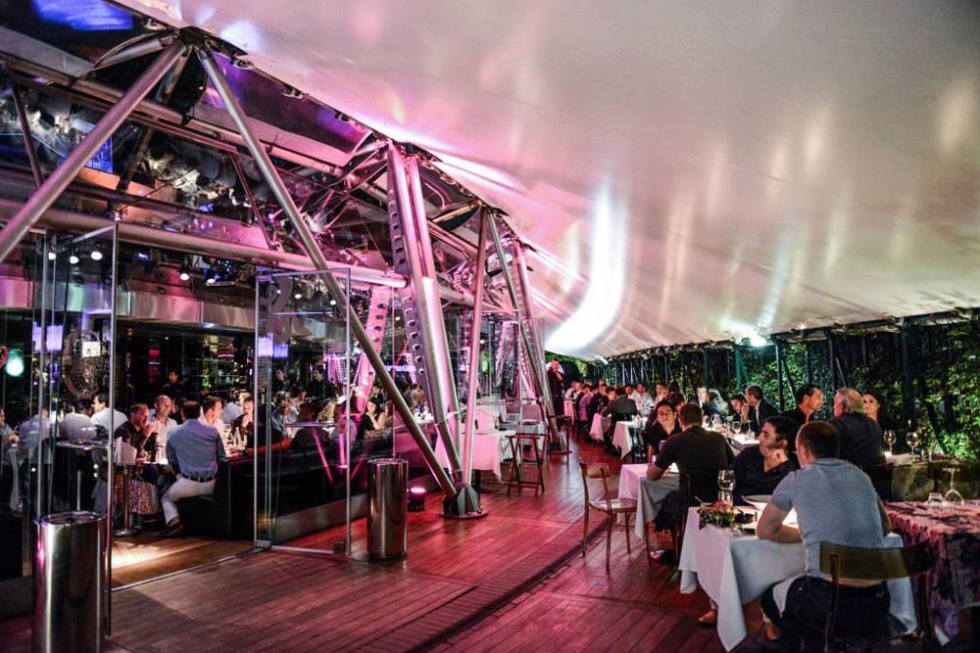From Setup to Catering: How to Reduce the Environmental Impact of Your Events
Sustainability is a foundational tenet for events focused on lowering their ecological footprint and fostering enduring benefits for the planet.
Incorporating sustainable practices throughout the planning process allows organizations to diminish their ecological impact while showcasing a firm dedication to combating climate change.
Choosing Sustainable Event Venues
Selecting an eco-friendly venue is a critical step in hosting a truly sustainable event. Key criteria to consider include:
- Energy efficiency through LED lighting, smart climate control, and renewable energy sources
- Waste reduction programs with robust recycling and composting initiatives
- Sustainable food sourcing with locally-grown, organic, and plant-based options
- LEED certification or other green building credentials

Are you looking for a sustainable venue for your corporate event? Contact us.
Reducing Emissions from Event Decor
Event decor like banners, signs, centerpieces, and backdrops often get overlooked as emissions sources. However, producing these decorative items can generate significant carbon emissions from materials extraction, manufacturing processes, and transportation.
To minimize the carbon footprint of your event decor, consider the following tips:
- Choose decor made from recycled, renewable, or upcycled materials whenever possible
- Instead of buying new decor for each event, explore rental options or reuse items from previous gatherings. Many event rental companies offer sustainable decor choices, and reusing items prevents unnecessary emissions from production
- Source decor from local artisans and makers to reduce emissions from long-distance transportation. Not only does this support your community, but it also ensures a lower carbon footprint for your decorative elements

The Carbon Impact of Event Catering
Event catering is a significant source of carbon emissions that is often overlooked. Food production alone accounts for a substantial portion of emissions. Agricultural practices, such as livestock farming and crop cultivation, release greenhouse gases like methane and nitrous oxide. Additionally, the use of synthetic fertilizers and pesticides contributes to emissions. By prioritizing plant-based menu options and locally sourced, seasonal ingredients, organizers can reduce the carbon footprint associated with food production.
Transportation is another major emission source in event catering. Food items frequently travel long distances from farms to processing facilities, distribution centers, and ultimately, the event venue. These transportation methods, whether by air, sea, or land, consume fossil fuels and generate emissions. Sourcing ingredients from local suppliers and vendors can significantly reduce the carbon footprint associated with transportation.
Finally, food waste is a significant contributor to emissions in event catering. Uneaten food that ends up in landfills releases methane, a potent greenhouse gas, as it decomposes. To combat this, organizers should work closely with caterers to accurately estimate attendance and portion sizes, and implement strategies for donating or composting excess food.

Monitoring Emissions and Communicating Sustainability Efforts
Accurately measuring your event's carbon footprint is crucial for effective emissions reduction and offsetting strategies. Incorporating event emissions into your annual sustainability report or corporate social responsibility (CSR) disclosures demonstrates transparency and accountability. This data can also inform target-setting and help track progress toward reducing your environmental impact over time.
Transparency and clear dialogue are crucial for building trust and demonstrating your commitment to sustainability. Develop a comprehensive strategy to promote your carbon-neutral initiatives before, during, and after your event. Remember, effective messaging not only highlights your dedication but also inspires others to adopt sustainable practices, creating a ripple effect that extends well beyond your event.






